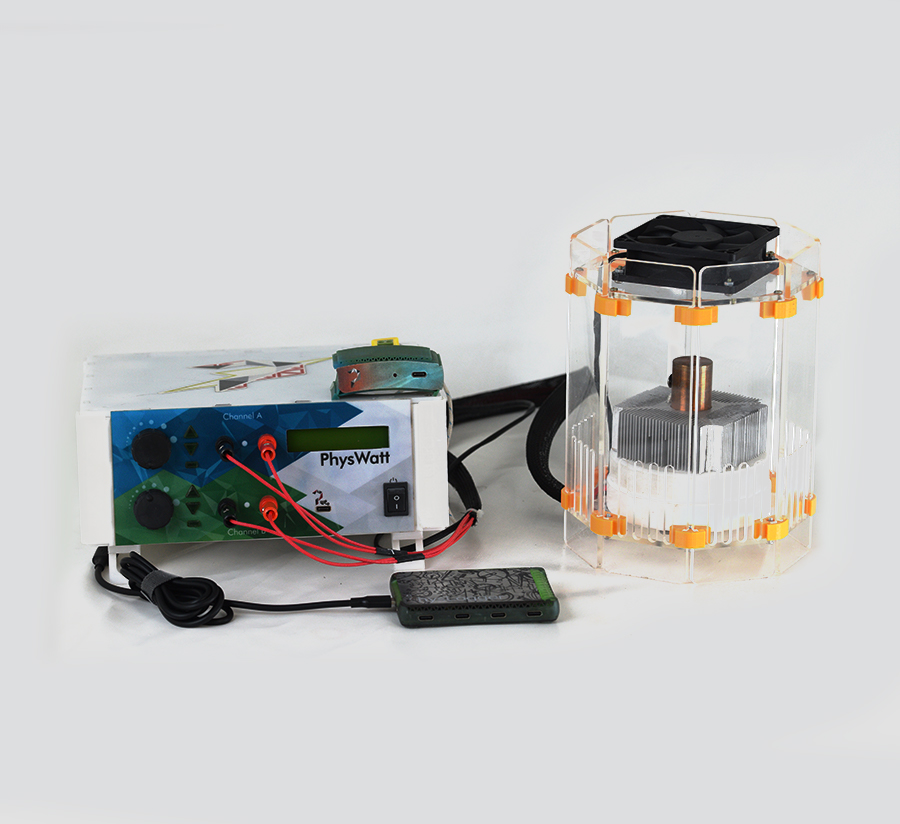Heating and Cooling
Heat transfer is everywhere, from the sun to our refrigerators. In this experiment, we explore the physics behind this phenomenon using a sophisticated setup that includes a perforated cylinder, fan, thermocouple, and PhysLogger’s sensing and logging system. This simple yet insightful investigation provides a deeper understanding of how objects heat and cool.
Overview
The Experiment
- Use of thermocouple.
- Newton’s law of cooling.
- Understand square waveforms.
- Curve fitting and graphical analysis.
- Compare forced and natural convection.
- Investigate various heat transfer modes.
How does it work?
In this experiment, we investigate various modes of heat transfer by heating a copper rod and observing how it cools. The rod is heated using two embedded cartridge heaters while being housed inside a perforated cylinder that is fitted with a fan. Periodic square waves generated by PhysWatt (a programmable power supply) and PhysLogger are used to power the cartridge heaters. The temperature of the rod is monitored by a thermocouple that is connected to PhysLogger via PhysTherm.
Cooling curves are obtained for both free and forced convection, by allowing the rod to cool with the fan turned off (naturally) and with the fan turned on (forcefully). These curves are further analyzed and corroborated with Newton’s law of cooling to estimate the coefficient of heat transfer in air.
Get Inspired!
- Seebeck effect
- Mpemba effect
- Regelation in ice
- Radiative cooling
- Leidenfrost Effect
- Thermoelectric effect
- Heat capacity of water
Major parts included
- Fan
- PhysWatt
- PhysTherm
- PhysLogger
- C Type Cable
- Thermocouple
- Cartridge Heater
- Ventilation Cylinder


